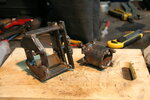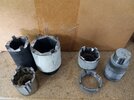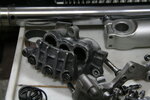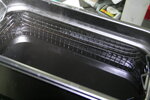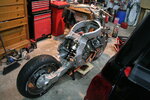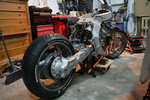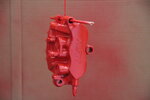I found a bearing broken in the rear wheel.
Yeah, I had that, the cage was gone along with several balls... reading the related forum info, it seems to be a relative common occurrence, that's why I took the flange apart to inspect these particular bearings. Used the forum article for pre-job preparation. Article was useful to me to learn that bearings go in/out relatively easily, don't have to pound a lot.

The rubber boot between the swing arm and the engine did not coupled good at the engine side, it's too big (did that happened to your bike?)
Yes, had a similar issue and fiddled with the boot a while, at the end I worked the swingarm up/down to ensure boot stays put.









